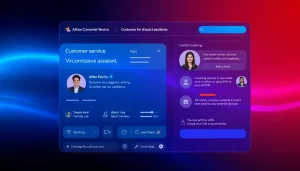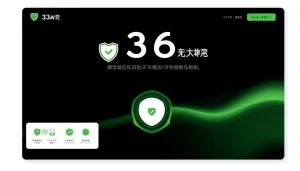Enhancing Brand Impact Through On-Site Videography Techniques
Understanding On-Site Videography Basics
Definition and Importance of On-Site Videography
On-site videography refers to the art and practice of capturing video footage at a specific location, rather than in a controlled studio environment. This form of videography plays a crucial role in various fields, including event coverage, corporate presentations, marketing campaigns, and educational content delivery. The dynamic nature of on-site videography allows for authentic storytelling, capturing real-time interactions, and creating a connection between the subject and the audience. In a world increasingly driven by visual content, the significance of high-quality video cannot be overstated, making On-Site Videography an essential tool for businesses and creators alike.
Types of On-Site Videography Projects
There are several types of projects that benefit from on-site videography. Understanding these can help clients and creators make informed decisions about their videography needs. Key types include:
- Event Coverage: This encompasses weddings, conferences, trade shows, and other special gatherings where capturing the essence of the moment is vital.
- Corporate Videography: This often includes training videos, promotional content, and internal communications designed to convey company values and objectives.
- Documentary Filmmaking: On-site videography is crucial for capturing real-life stories, interviews, and interactions that enrich documentary content.
- Product Demonstrations: Showcasing products in their intended environments can provide potential customers with a better understanding of their applications.
- Real Estate Videography: High-quality video tours of properties can significantly enhance listings and offer an immersive experience to prospective buyers.
Key Equipment for Effective On-Site Videography
Successful on-site videography requires the right equipment to capture and produce high-quality content. Essential tools include:
- Camera: A good camera is the cornerstone of any videography project. DSLRs, mirrorless cameras, or even high-end smartphone cameras can produce compelling results.
- Tripod or Stabilizer: A tripod or gimbal stabilizer is essential for smooth and steady footage, especially in dynamic shooting environments.
- Microphones: Quality sound is critical in videography. Lapel or shotgun microphones can significantly enhance audio quality, ensuring clarity in dialogue and ambient sounds.
- Lighting Equipment: Natural light can be unpredictable, so portable lighting kits can help achieve balanced illumination in varying conditions.
- Editing Software: After capturing footage, robust editing software is required for post-production to refine and enhance the visual and audio elements.
Best Practices for Capturing Quality Footage
Pre-Production Planning Techniques
Thorough planning is key to ensuring a successful on-site videography project. Effective pre-production techniques include:
- Define Objectives: Clearly outline the goals of your videography project, such as educating your audience, promoting a product, or commemorating an event.
- Script and Storyboard: Develop a script and storyboard to visualize the sequence of shots, helping ensure a coherent narrative structure throughout the project.
- Scout the Location: Visit the shoot location beforehand to identify potential challenges or highlights, allowing for adjustments in planning.
- Schedule Interviews: If human subjects are involved, schedule interviews or discussions ahead of time to ensure all participants are prepared.
Tips for Shooting On-Site Videography
When it’s time to shoot, keep the following tips in mind for the best results:
- Adapt to Environment: Be mindful of your surroundings, adjusting your framing and angles based on the location’s features.
- Utilize Natural Light: Whenever possible, take advantage of natural light for an authentically aesthetic look.
- Monitor Audio: Always check audio levels during recording to avoid unwanted noise or distortion, ensuring clarity in your content.
- Maintain Camera Stability: Use tripods or stabilizers to minimize shaky footage, especially during critical shots.
Post-Production Considerations
After filming is complete, the post-production phase is where the magic happens. Consider these strategies:
- Organize Your Footage: Properly labeling and organizing your video files will streamline the editing process.
- Edit for Quality: Use editing software to cut unnecessary footage, adjust audio levels, and apply color correction for a polished final product.
- Incorporate B-Roll: Supplement your primary footage with B-roll to enhance storytelling and seal engagement with varied visuals.
- Seek Feedback: Before the final release, share a draft version with trusted colleagues for constructive criticism.
Impact of On-Site Videography on Audience Engagement
Creating Compelling Stories through Video
Video is an unparalleled medium for storytelling due to its ability to evoke emotions and convey messages more compellingly than text alone. On-site videography enables creators to capture genuine moments and interactions that resonate with viewers. By weaving narratives that connect with the audience, videographers can better communicate values and messages, driving greater connection and engagement.
Utilizing Video for Marketing and Branding
As a powerful tool for marketing, on-site videography can significantly enhance branding efforts. Marketers can leverage captivating video content across social media platforms, websites, and email campaigns to engage audiences more effectively. Videos that showcase a brand’s authenticity, such as behind-the-scenes glimpses or customer testimonials, establish a deeper connection between consumers and the brand, fostering loyalty and trust.
Measuring Engagement Metrics in Videography
To assess the success of on-site videography, it’s essential to monitor and analyze metrics such as:
- View Counts: Track how many times your video has been viewed to gauge interest levels.
- Engagement Rates: Measure likes, shares, comments, and mentions to understand audience interaction.
- Conversion Rates: Analyze how many viewers took action based on the video’s call to action, whether it’s signing up, buying, or sharing.
- Watch Time: Longer watch times can signal that viewers are engaged, whereas a drop-off rate may suggest areas for improvement.
Challenges Facing On-Site Videography Professionals
Addressing Common Pitfalls
On-site videography, while rewarding, comes with its challenges. Common pitfalls include:
- Poor Audio Quality: Utilize quality microphones and soundproofing techniques to capture clear audio, an essential part of effective videography.
- Unplanned Weather Changes: Always have a contingency plan. Portable tarps or indoor location alternatives can help mitigate issues caused by rain or high winds.
- Technical Difficulties: Familiarize yourself with all equipment and conduct gear checks regularly to minimize unforeseen hiccups during shooting.
- Client Miscommunication: Maintain open and clear communication with clients to ensure their expectations align with your vision, and document all agreements.
Technological Issues and Solutions
With the rapidly evolving nature of technology, videographers face unique challenges. Some solutions to consider include:
- Keen Awareness of Equipment: Stay updated on the latest videography tools and software, participating in workshops or online courses.
- Adopting Cloud Storage: Use cloud services to back up footage immediately to prevent loss due to equipment failure.
- Investing in Reliable Equipment: Where possible, opt for high-quality cameras and sound equipment that are known for their durability and performance.
Managing Client Expectations
Effective client management is crucial in on-site videography. Tips to ensure satisfaction include:
- Detailed Proposals: Presenting a clear project proposal outlining timelines, costs, and expected outcomes can prevent misunderstandings.
- Regular Updates: Keep clients informed throughout the process, from planning through post-production, to cultivate trust.
- Be Open to Feedback: Encourage clients to voice their opinions and concerns, fostering a collaborative environment.
Future Trends in On-Site Videography
Emerging Technologies in Videography
The future of on-site videography is likely to be shaped by several emerging technologies, including:
- 360-Degree Video: This immersive video format allows viewers to engage with the content actively, creating a more interactive experience.
- Virtual Reality (VR): Combining VR with videography can transport audiences to unique locations or events, enriching storytelling possibilities.
- Drones: Drone videography has expanded capabilities, allowing for breathtaking aerial shots that can elevate any project.
Shifts in Audience Preferences
As viewer preferences evolve, videographers must adapt to remain relevant. Key shifts include:
- Short-Form Content: With the rise of platforms like TikTok and Instagram Reels, audiences are gravitating towards shorter, more engaging pieces.
- Personalization: Customized content that speaks directly to niche audiences can enhance engagement and create emotional connections.
- Authenticity Over Perfection: Today’s audiences prefer raw, authentic content over polished productions, emphasizing real stories and experiences.
Innovative Strategies for On-Site Videography
To stay ahead in the evolving landscape of on-site videography, consider incorporating innovative strategies such as:
- Interactive Videos: Enabling viewers to choose their own narrative paths through interactive video formats can enhance viewer engagement.
- Live Streaming: Providing real-time content through live streams allows for spontaneity and immediate audience interaction.
- Cross-Promotion: Collaborate with social media influencers or brands to harness a broader audience and greater reach.














Post Comment